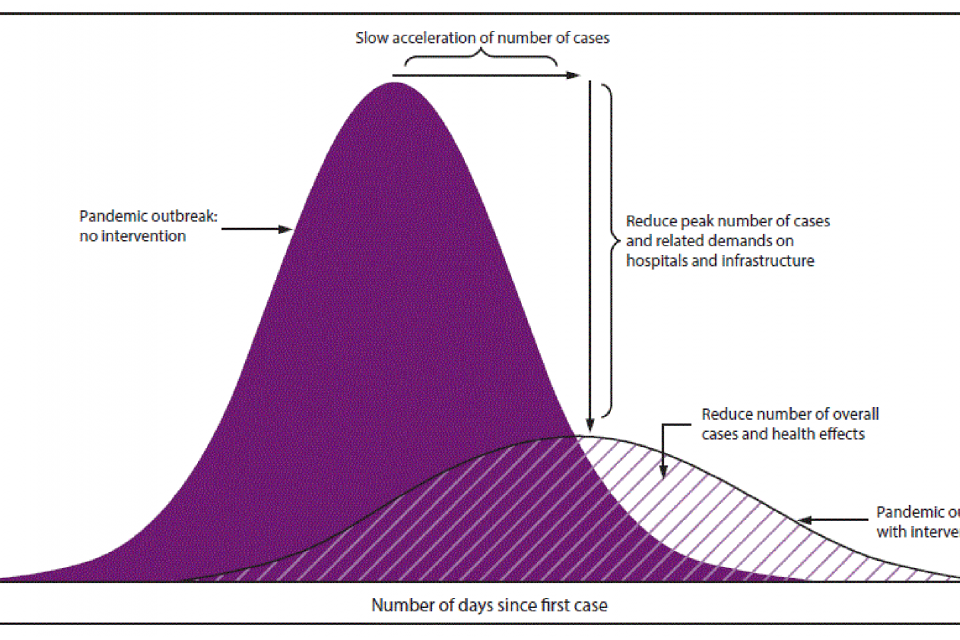
Updates on COVID-19 are coming fast and furious — and it can be hard (not to mention stressful) to keep up.
What’s more, reading news articles and alerts can feel like interpreting a foreign language, from vague phrases and symptoms to confusing medical terms and scientific jargon.
If you’re feeling overwhelmed, you’re not alone.
Combat stress by limiting your news intake to a few reputable sources, like the Centers for Disease Control and Prevention or the World Health Organization, and make sure to practice self-care if you are feeling anxious.
And to tackle those terms? Here’s a COVID-19 vocabulary primer to help you navigate these new words and phrases.
Novel virus
No, COVID-19 doesn’t have anything to do with your favorite paperback. What makes COVID-19 “novel” is that it’s a new coronavirus that hasn’t been seen in humans before.
Pandemic
While an epidemic is greater-than-expected increase of a disease in a population, a pandemic is global spread of a disease — wider than that of an epidemic. The World Health Organization declared COVID-19 a pandemic on March 11, after it spread across at least 114 countries.
Self-quarantine
Self-quarantine is a public health measure used to contain the spread of a disease. If you have been exposed to COVID-19, you should self-quarantine, or stay home at all times, not accept visitors and keep 6 feet away from the people you live with. In the case of COVID-19, 14 days is the recommended amount of time to self-quarantine.
Flattening the curve
By attempting to slow the spread of COVID-19, or “flatten the curve,” public health officials hope to avoid a sudden increase in the number of cases that might overwhelm the healthcare system. Basically, this phrase is another way of saying the slower the number of COVID-19 cases increases, the better healthcare systems will be able to handle them.

Community spread
Community spread is one of three ways the coronavirus has spread in the U.S., according to Centers for Disease Control and Prevention. The other two ways are cases that were brought to the U.S. by travelers and cases that spread from those who already had confirmed COVID-19. In contrast, community spread happens when infection circulates within a contaminated geographical area or community and people in that area are infected from both known sources (a roommate or partner) and unknown sources (an infected individual in the community).
Social distancing
This health technique is a set of behaviors that helps prevent the spread of a virus. Though it’s called social distancing, it actually means physical distancing: staying home as much as possible, avoiding in-person gatherings and maintaining 6 feet of distance from other people. This practice is recommended throughout the U.S. and required in Washington state, where Governor Inslee announced Washingtonians must stay home at all times, except for essential activities like getting groceries or medicine.
Shortness of breath
You probably know that shortness of breath is one of the symptoms of COVID-19, but what does the term actually mean? Simply stated, shortness of breath is difficulty breathing or feeling like you can’t get enough air, which you may have experienced in the past for a brief period after exercise such as running up a flight of stairs. Prolonged shortness of breath can be an emergency warning sign for COVID-19, especially if combined with chest tightness or pain, lightheadedness, wheezing or if your lips turn blue.
Respiratory droplets
Imagine a cartoon character sneezing and you have an exaggerated idea of what respiratory droplets are. People who are infected with COVID-19 produce respiratory droplets when they speak, sneeze or cough. You can get infected if you inhale these droplets or if you touch a surface that has been contaminated (think: sneezed on) and then touch your mouth or nose. This is why it’s important to cover your cough with a tissue or your shirt sleeve and to frequently wash your hands or use hand sanitizer if soap and water aren’t available.
Incubation period
This is the time period between when an individual is exposed to an infection (in this case the coronavirus) and when their first symptoms show up. For COVID-19, the incubation period is two to 14 days.
Asymptomatic transmission
Asymptomatic transmission is when an infected person who does not show any symptoms passes the virus to another person. There have been some studies that show COVID-19 can be spread through asymptomatic transmission, but more information is still needed before this is conclusive.
The info in this article is accurate as of the publishing date. While Right as Rain strives to keep our stories as current as possible, the COVID-19 pandemic continues to evolve. It’s possible some things have changed since publication. We encourage you to stay informed by checking out your local health department resources, like Public Health Seattle King County or Washington State Department of Health.

 Healthy ideas for your inbox
Healthy ideas for your inbox





